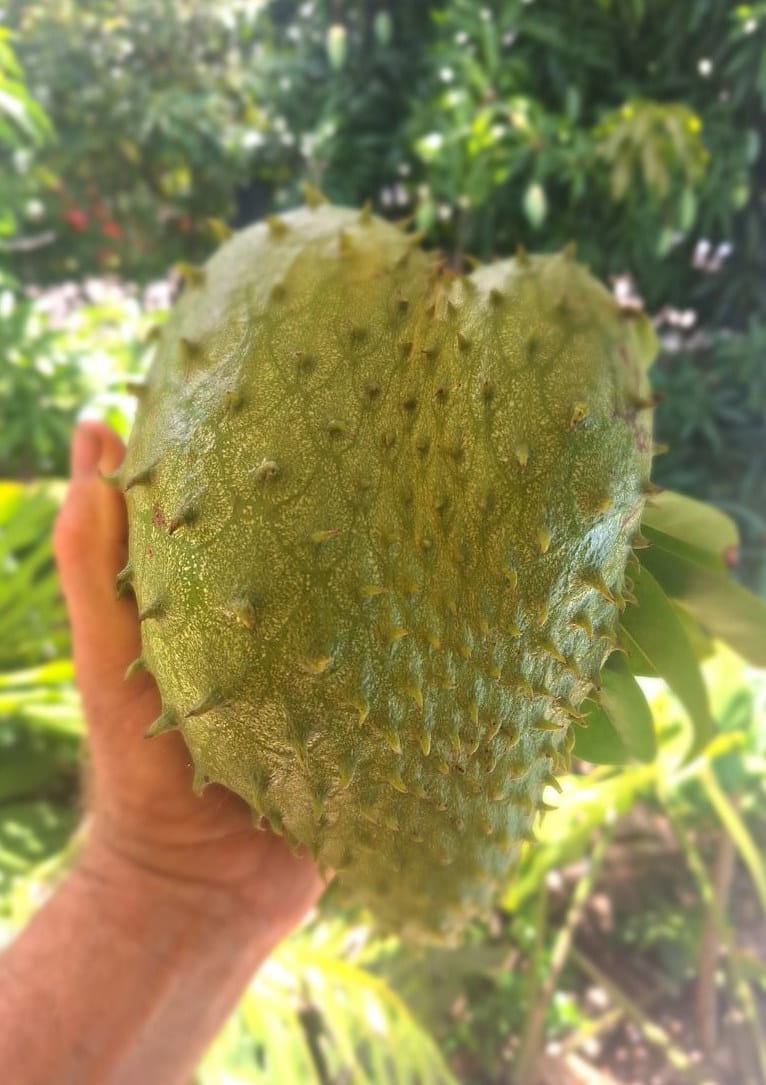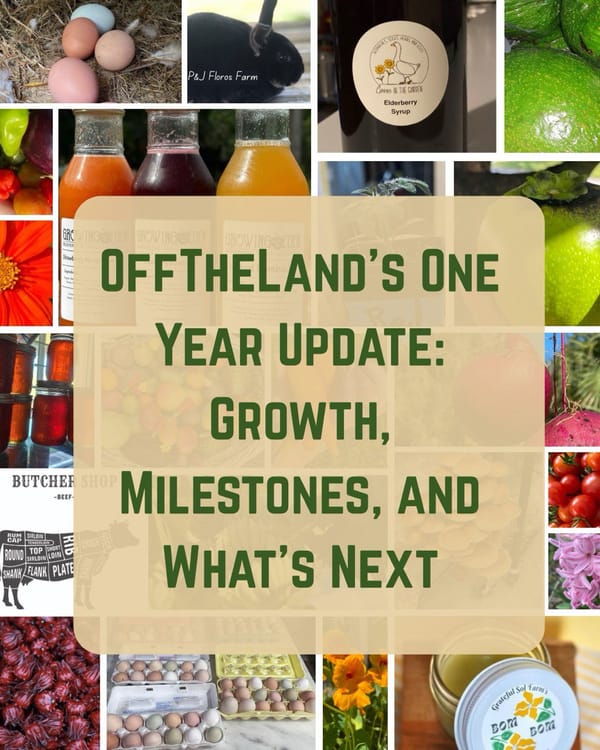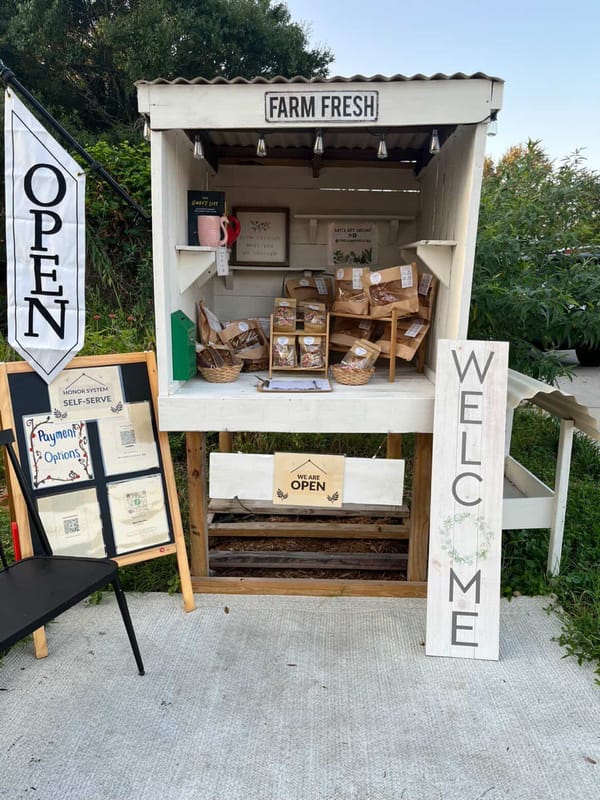Soursop: Monetize Your Florida Garden With One of the Most Valuable Fruits

Imagine a tree that drops massive spiky green fruits the size of your forearm. Imagine slicing one open to reveal custard-like white flesh that tastes like pineapple, strawberry, and creamy citrus all at once. That’s soursop. And yes, it can grow in Florida.
Soursop (Annona muricata), also known as guanábana or graviola, is a fast-growing tropical fruit tree native to Central and South America[1]. It’s gained legendary status in Caribbean and Southeast Asian kitchens, herbal medicine cabinets, and even among gardeners dreaming of fruit that’s both exotic and deeply nourishing.
Today, we’re giving this spiky miracle the spotlight. Whether you're dreaming of a micro food forest, a pollinator paradise, or simply want to add a beautiful income-generating tropical fruit tree to your garden, soursop might just be your next favorite thing.
Can Soursop Grow in Florida?
Yes, soursop loves Florida, but only certain & south parts. USDA zones 10–11 are the sweet spot. Think South Florida: Miami-Dade, the Keys, Naples, maybe even parts of Tampa Bay or the Space Coast if you're strategic about microclimates. Soursop hates cold! If your region dips below 40°F, even briefly, you're going to need to protect it or grow it in a container you can move.
It’s a sun-loving diva, so give it full sun. No shade, no shelter, just open skies and rich, well-drained soil (important!). Mounds work well in flat Florida yards to avoid root rot. Use compost, chop & drop, and water regularly. If your soil is sandy, that's ok. You are building your soil!
Pro tip: plant where it gets warm morning sun and a little afternoon protection if your summers are scorching.
How Long Until It Fruits?
Soursop grows fast. From seed, you might wait 3–7 years for fruit. From a grafted plant or rooted cutting, you could see fruit in 2–3 years[2]. Trees can easily grow 15–30 feet tall if unpruned, but it’s better to keep them around 10–12 feet so you can actually harvest those giant fruits without a ladder.
Pest and Disease Warnings (but Don’t Panic)
There’s one pest that makes Florida soursop growers shudder: the annona seed borer. It's a tiny wasp or fly that lays eggs in young fruit, and the larvae munch straight into the seeds. Gross. The best defense is bagging each fruit while it’s still small, which also deters other fruit flies.
Other pests include mealybugs, scale, whiteflies, and some caterpillars. Most can be handled with beneficial bugs (ladybugs, lacewings), neem oil, or soapy water sprays.
Fungal issues like anthracnose can happen in Florida humidity. Prune for airflow, water at the base, and avoid crowding it with other trees. Raised beds help a ton.
Organic, Regenerative, and No-Till Friendly
Soursop thrives under the same practices you’d use in a permaculture orchard. It responds beautifully to deep mulch, compost, and worm tea. If you’re no-till, companion planting with nitrogen fixers (like pigeon pea or legumes) and dynamic accumulators will boost your soil over time. Cover crops help retain moisture and keep roots cool.
Think of it as a tropical understory tree that starts fast and produces early, so you can weave it into a long-term guild with bananas, avocado, or moringa.
How to Harvest Soursop Without Losing It
Soursop doesn’t just sit around waiting politely to be picked. When it’s ripe, it drops. But if it drops too hard, it bruises and spoils. So instead, watch for color changes: dark green fades to a light yellowish green, and the spiky skin softens a bit. Give it a gentle squeeze. If it gives a little, snip it off and ripen indoors for a day or two.
The fruit is super perishable, so eat it, blend it, or freeze it fast.
Recipes, Nutrients, and Medicinal Lore
The flavor is like a creamy pineapple popsicle. You can scoop it straight out with a spoon, or blend it into smoothies with coconut milk, banana, and lime. It also makes an amazing ice cream.
Nutritionally, it’s packed with vitamin C, fiber, potassium, and antioxidants[3]. The leaves are often brewed into calming teas in folk medicine traditions from the Caribbean to Southeast Asia.
A few studies suggest soursop has antimicrobial, anti-inflammatory, and possibly anticancer properties, though large clinical trials are still lacking[4]. The seeds and bark contain compounds that are definitely toxic, and excessive soursop consumption has been linked to neurological risks in some regions. Like many powerful plants, moderation matters.
Selling or Trading Soursop: The Money Tree Angle
One well-tended soursop tree can produce dozens of fruits each season. Some home growers report 50+ fruits per year, with individual fruits selling for $10–25 depending on size, freshness, and whether it’s grown regeneratively/organic, etc. That’s not bad for a backyard plant.
OffTheLand.net allows you to sell your soursop fruit, tea leaves, seedlings, or even entire trees locally with no fees. It’s like turning your backyard into a micro-farm stand, minus the Farmers Market red tape. And you can start small: just list what you have or what’s ripening soon. People will come to you.
Where to Buy or Trade Soursop in Florida
Good news: OffTheLand already has sellers listing soursop trees, seedlings, and fresh fruit in Florida. Many grow organically, some even use regenerative methods (like compost-only fertilizing, no sprays, hand-watering). You can browse local listings, make a wishlist, or offer a trade.
Your next fruit tree might be growing just a few blocks away!!
Summary: Should You Grow Soursop?
If you’re in tropical or subtropical Florida, and you want to grow something exotic, valuable, delicious, and slightly mysterious, soursop is worth it. You’ll need to watch the cold, keep the bugs in check, and eat the fruit fast. But the rewards? Sweet, tangy, and possibly... life-changing.
This is one of those trees that can feed your body, bring in a little side income, and spark a lot of curious conversations with your neighbors. Just how we like it.
National Research Council. "Lost Crops of the Incas: Little-Known Plants of the Andes with Promise for Worldwide Cultivation." National Academies Press, 1989. ↩︎
University of Florida IFAS Extension. https://edis.ifas.ufl.edu/publication/MG330 ↩︎
USDA FoodData Central. https://fdc.nal.usda.gov/fdc-app.html#/food-details/169124/nutrients ↩︎
Moghadamtousi, S. Z., et al. "Annona muricata (Annonaceae): a review of its traditional uses, isolated acetogenins and biological activities." International Journal of Molecular Sciences, 2015. ↩︎
Frequently Asked Questions
Can I generate an income growing soursop?
Yes, soursop can be a very profitable tree in Florida. Each tree can produce dozens of fruits annually, which may sell for $10–25 each at local markets or through OffTheLand.net. Selling tea leaves, seedlings, or young trees can add additional income streams for homesteaders and people with food forests.
Where can I buy organic soursop plants or fruit locally?
You can find locally grown soursop plants, trees, leaves, and fresh fruit on OffTheLand.net from growers across Florida. Many use organic or regenerative methods.
How do I grow soursop in Florida?
Soursop grows best in USDA Zones 10–11. It needs full sun, protection from cold snaps, well-drained soil, and regular watering. Mulching and composting improve soil structure and nutrient retention.
What soil pH and sun exposure does soursop require?
Soursop prefers slightly acidic to neutral soil, with a pH range of 5.5 to 6.5. It needs full sun for most of the day—at least 6–8 hours of direct sunlight daily.
When and how should soursop fruit be harvested?
Harvest when the fruit's skin softens slightly and changes from dark green to a lighter yellow-green. It should give a little when gently pressed. Cut with pruners to avoid damaging the tree.
How do I know if a soursop is ripe?
A ripe soursop softens quickly and becomes slightly fragrant. Its spiky skin gives under light pressure. If it’s rock hard or overly squishy, it’s either unripe or overripe.
What pests/diseases affect soursop and how to control them?
Common pests include fruit flies, seed borers, scale, mealybugs, and whiteflies. Use neem oil, bag developing fruit, introduce beneficial insects, and prune for airflow. Fungal issues can be managed with good spacing and drip irrigation.
What are soursop’s health benefits and risks?
Soursop pulp is rich in antioxidants, vitamin C, fiber, and potassium. Traditional medicine uses it for immune support, calming effects, and more. However, excessive intake or use of seeds/leaves may pose neurological risks.
Can I make tea from soursop leaves?
Yes, soursop leaves are used in herbal teas. A few fresh or dried leaves steeped in hot water is common. Avoid daily or high-concentration use, and consult with a herbalist or doctor if unsure.
How soon does a soursop tree produce fruit?
From seed, expect 3–7 years to fruit. From a grafted or rooted plant, 2–3 years is common. Proper care and good weather can speed things up.





